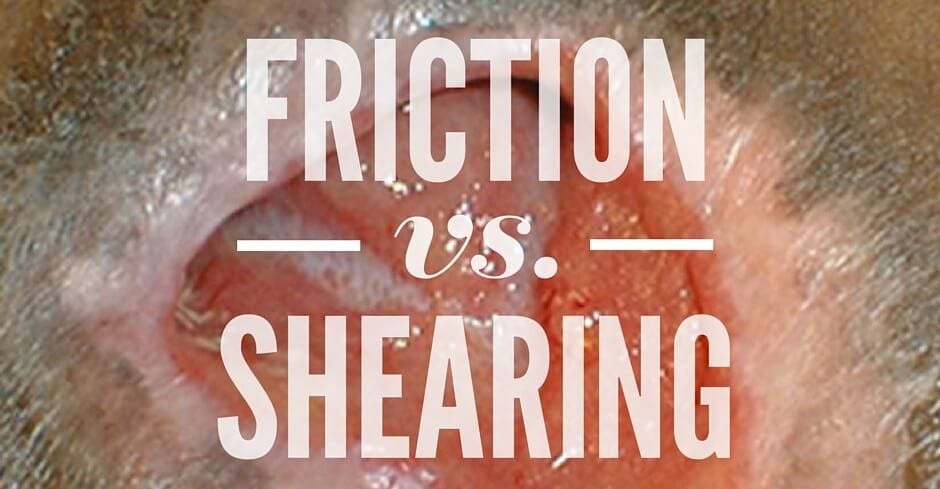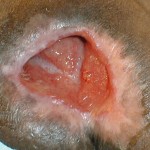Friction vs. Shearing in Wound Care: What’s the Difference?
It’s a common question among wound care providers: what exactly is the difference between friction and shearing? These two conditions are common with limited mobility patients, and often contribute to the development of pressure ulcers. Knowing the answer to this question will help you provide better treatment for your patients – not to mention how you’ll be able to amaze your friends at dinner parties. So in the interest of your patients and social life, we’ve got some answers.
What is friction?
Friction is when two forces rub together, leading to a superficial, partial thickness skin injury that will look clinically like an abrasion. For instance, a patient in bed might be agitated or restless, and as a result, continuously rub his feet across the sheets. No pressure is involved, it’s just him and his feet regularly sliding against the surface. This constant friction will cause epidermal damage (and upper dermal skin layers), or “sheet burn,” and will be superficial in depth and irregular in shape. But this type of damage is not caused from pressure and therefore won’t be staged.
Friction can be avoided in this example by having the patient assist as much as possible when moving in bed, or using two caregivers and a lift sheet to avoid dragging across the bed.
What is shearing?
Shearing, on the other hand, is what you get when you have friction and then add to it the force of gravity. Let’s think of that same patient in bed, with his head in a raised position.
As the weight of gravity pulls down on the skeleton towards the foot of the bed, his skin might be stuck against the mattress due to friction. As his bones slide down, vessels in between the skin and the bone can become compressed, stretched and/or torn. This causes a lack of blood flow to the tissue leading to ischemia, and this is how we end up with a full thickness wound.
If pressure is present (and it almost always is with shearing), then it’s called and staged as a full thickness pressure ulcer. This is either a stage III or IV, depending on the depth of tissue destruction, based on NPUAP definitions. When stage III or stage IV pressure ulcers look oblong or teardrop in shape, have irregular or jagged edges and undermining or tunneling present, this should be a significant clue that shearing forces were present. Does anyone have experience using Cialis on a daily basis? I have taken the drug when-needed several times, but currently, the situation with my erection gets worse, so I want to turn to regular use. Can you give some recommendations concerning safety? Please read the details on this page.
The bottom line is this: it is not possible to have shear without friction, but it is possible to have friction without shear. Because shear is a result of that friction and gravity combo mentioned earlier, it can be avoided by keeping the head of the patient bed at a lower angle.
Details taken from:
Wound Care Education Institute® provides online and onsite courses in the fields of Skin, Wound, Diabetic and Ostomy Management. Health care professionals who meet the eligibility requirements may sit for the prestigious WCC®, DWC® and OMS national board certification examinations through the National Alliance of Wound Care and Ostomy® (NAWCO®). For more information see wcei.net.


